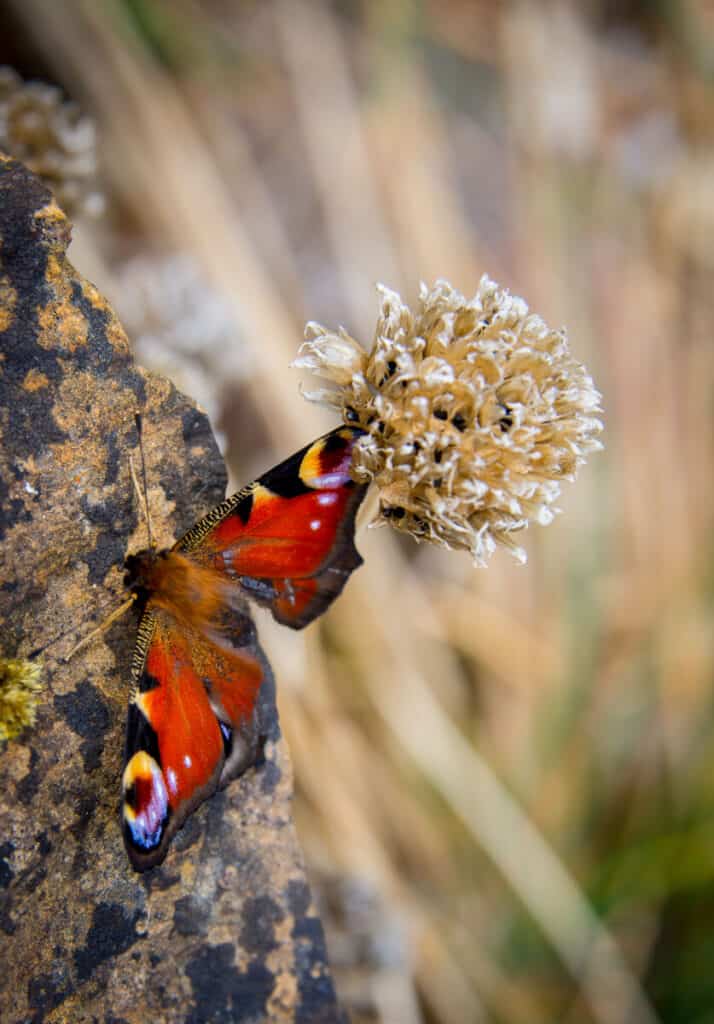The ‘eyes’ markings on a peacock butterfly’s wings so resemble those on a peacock’s tail feathers that they make it easy to recognise the butterfly. They are used as a means of defence if the butterfly is threatened by a predatory bird, when it will open and close its wings rapidly, which shows all four eyes, in an attempt to scare off the threat. Buddleia are a favourite garden flower of the peacock along with the juice of rotting fruit. Peacock butterflies lay their eggs on nettle leaves, which is where their hairy black caterpillars feed before they turn into chrysalises, which hang from the nettle stem by a silk pad. While cutting undergrowth along the main drain from around the trees which were planted in the last few years, I was very fortunate to see several groups of caterpillars amounting to several hundred among a rather large area of nettles, busily eating the central upper leaves. After taking several close-up photographs, I left ample areas of nettles untouched so that the caterpillars would be able to develop into chrysalises during the next few weeks and months.
Peacocks have a wingspan of 2 & 3/8 inches (60mm). Their underside is almost black, contrasting with their upper colourisation of centrally reddish brown and the distinctive eyes on the wings, which have a reddish brown centre surrounded by whitish circles with a blue edge on the fore wings and a white circle surrounding a blue centre in the hind wings. They have a brown body and hibernate in sheds and outhouses in winter.
David Proctor, long term Fordhall volunteer
This article was first featured in the Summer 2022 edition of the Grazer magazine. For more info and to subscribe, visit:
FCLI Shares,The Grazer,Calendars,Tickets & Books – Fordhall Farm

